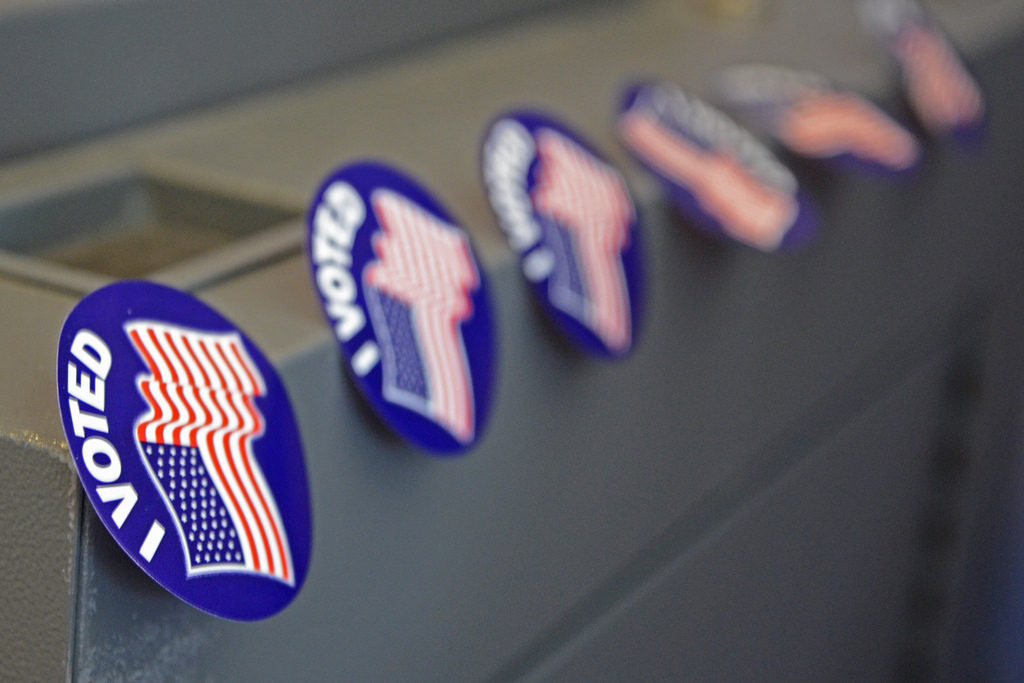This essay is part of our collection on the ethics of voting. See the full collection here.
As the election season draws near, with Donald Trump as the Republican Party’s candidate, many principled conservatives have considered either abstaining from voting for president or voting for a third-party candidate who, as Greg Brown admits, “will, with virtual certainty, lose.”
I sympathize with their concerns. Though many conservatives show at least tentative support for some of Trump’s qualities and commitments—his candor in the face of political correctness or his willingness to confront pressing domestic challenges—they question his character, his rhetoric, and his relative silence on the social issues conservatives hold dear. Would voting for Trump compromise their principles? Would they be morally responsible if he were to enact certain questionable policies? Would a term or two with President Trump undermine popular support for the Republican Party for decades—perhaps forever?
These are important concerns. Yet, challenging though they are, one wonders whether they provide sufficient grounds to abstain from voting this November. I argue that they do not. Those who favor abstaining have, I believe, adopted a faulty model of political action, one that threatens to undermine the conservative resistance to a wave of alarming policies from the radical left. Fortunately, there is another model. Unlike the first, it enables principled conservatives to vote—and to act—during and after the upcoming election.
Start your day with Public Discourse
Sign up and get our daily essays sent straight to your inbox.Two Models of Political Action
I call these two paradigms the fixed and the fluid models, respectively. I take the fixed model to represent the viewpoint of those who favor abstaining in the upcoming election (though, as we will see later, there is a sense in which abstainers also embrace the fluid model). According to the fixed view, political action is by and large a one-step process, a single moment in time, during which we cast our vote. By this vote, we show our support for a particular person and/or platform, which we regard as a fixed reality. Thus, in voting for Donald Trump or Hillary Clinton, we take them and their policies as we find them at the moment of the vote.
If I am correct in identifying most potential abstainers with the fixed model, then it is no wonder why they cannot bring themselves to cast a ballot, for they cannot in good conscience support the candidates or platforms as they find them. Were the fixed model the only option available to us, then we should expect many more abstainers to join their ranks.
The fluid model, however, provides a way forward. According to this view, political action is essentially a two-step process. Like the fixed model, it begins with the vote; yet unlike that model, the fluid one views voting not as endorsing a person and/or platform—at least not directly—but rather as buying time. In other words, voting is a matter of choosing the candidate (or party) that seems most open to continued dialogue about crucial matters concerning the common good. Thus, in “buying time,” one secures the continued space for undergoing that second and more crucial step of political action: persuasion.
I use the word “persuasion” here in a broad sense. By it, I mean our attempt to convince others—through our words, our deeds, and our prayers—of our vision of the good life and of the policies that are conducive to that life. The “others” I have in view include government officials but also opinion leaders (in the arts, media, and business), educators, ministers, and neighbors.
This view assumes, in other words, that a person’s positions are not fixed realities but are fluid. They are subject to change, for better or for worse, based upon persuasion. As such, we must not treat political action as a once-and-done, vote-and-desist process but as a life, the life of the “political animal,” to use a phrase from Aristotle. In our present democratic republic, this life includes the act of voting. We should take our vote seriously, carefully considering which candidate is most likely to buy us the time to engage in persuasion. Thus, if a candidate seems likely to place undue restrictions on free speech, for instance, or would violate religious liberty, then we ought seriously to consider alternative candidates, because such restrictions would hinder our attempts at persuasion. Regardless of who gets elected, however, we must treat this person and his or her platform as open to change (at least in theory), then boldly set about the task of seeking reform.
Support for the Fluid Model, Past and Present
Thomas More’s classic work of political philosophy, Utopia, provides a helpful illustration. Book I of More’s two-part volume features an extended dispute between two characters—Raphael Hythloday, a learned traveler who spent five years in Utopia, and Thomas Morus, a London lawyer and the work’s narrator. The dispute concerns whether Raphael should use his learning and experience of foreign lands for the common good by advising kings on sound and just policies. Thomas argues yes, but Raphael says no, offering various reasons for abstaining from the political life.
On the surface, Raphael seems to win the dispute. Yet, in one memorable passage, Thomas counters with these words:
If you cannot pluck up bad ideas by the root, or cure long-standing evils to your heart’s content, you must not therefore abandon the commonwealth. Don’t give up the ship in a storm because you cannot hold back the winds … Instead, by an indirect approach, you must strive and struggle as best you can to handle everything tactfully—and thus what you cannot turn to good, you can at least make as little bad as possible.
Five hundred years later, we face a similar question. Will we “give up the ship” by abstaining from voting, thereby forfeiting a say in who assumes our highest office? Or will we endeavor to “make as little bad as possible”? If I am right about the fluidity of politicians and their platforms, then we may even hope to turn much to good.
Whatever we do this November, it seems clear to me that the political left has already embraced the fluid model to great effect in recent decades. To see this, we need look no further than the widespread change in popular views about marriage and gender identity—including the view of our president himself, while in office. Such changes did not occur accidentally. They occurred because of diligent efforts to persuade policymakers, opinion leaders, and the general public to adopt a different view of the good life.
I suspect that many of the people behind this effort voted for the candidate they thought most likely to buy them time, most likely to give them a hearing, even if his initial platform did not support their goals. Then, upon his election, they set about changing hearts and minds. In other words, they showed the fluid model in action.
The process can work in any direction: left, right, and center. But it will not work if we allow the rising tide of efforts to curb free speech and restrict religious liberty to wash away any chance at persuasion.
Rejecting Both Candidates as a Long-Term Strategy of Persuasion
There are some conservatives who agree with More’s call to “make as little bad as possible” but who would rather abstain from voting, have Trump lose the election, and spend the following years realigning the Republican Party with true conservative ideals. According to this view, acquiescing to Donald Trump would compromise too much, making it worse, in the long run, than a loss to Hillary Clinton. Better to forfeit this battle but win the war.
This brings me to an important point to which I alluded earlier. As the above paragraph shows, there is a sense in which some would-be abstainers also subscribe to the fluid model. They find this fluidity not in the candidates nor in their platforms but in the political parties themselves. To the elites of these parties, abstainers hope to send a signal of disapproval, a signal so strong—and even painful—that it forces necessary reform.
With the November elections mere months away, we must ask ourselves: Is this strategy sound? In theory, I think it is. Party elites would have no choice, it seems, other than to take seriously such a powerful message. In our present context, however, I fear the strategy risks too much.
If the intellectual arm of the conservative movement abstains from voting and persuades other conservatives to follow suit, then Clinton will almost certainly win the presidency. Such a victory promises not only four or eight more years of continued liberal policy, but a consolidation of power in the Supreme Court that might last for decades. If this happens and the radical left continues with its agenda, then key freedoms may further erode. In particular, the election of Hillary Clinton would threaten the freedom to engage in honest discussion about important moral issues and the freedom to live out our philosophical and religious convictions in the public square.
Those who would abstain or vote third party as a means toward future GOP reform may soon find that the space to pursue such reform has disappeared. No, better to vote this November—even amid far-from-ideal options—and then diligently set about reform from the inside.













